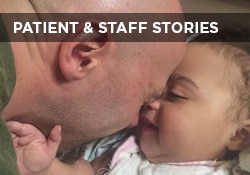This website uses cookies so that we can provide you with the best user experience possible. Cookie information is stored in your browser and performs functions such as recognising you when you return to our website and helping our team to understand which sections of the website you find most interesting and useful.

Susan E. Mazer, Ph.D. Blog
Thoughts and ideas on healthcare
Hi, and welcome to my blog! I'm Susan E. Mazer -- a knowledge expert and thought leader on how the environment of care impacts the patient experience. Topics I write about include safety, satisfaction, hospital noise, nursing, care at the bedside, and much more.
Waiting Is the Worst – Here’s How to Fix the Waiting Room Experience
March 4, 2022
When a patient waits, their suffering begins. Whether nervously waiting for a call from the doctor, waiting for your doctor’s appointment that’s in the next few hours, sitting in an ICU waiting room, or even waiting for your test results from an MRI, CAT scan, or COVID test… time feels endless. In short, the waiting room experience needs to be fixed across healthcare organizations.
More than merely time, Florence Nightingale wrote that “expectation, anticipation, fear of surprise” damages patients under most circumstances.
A 2011 study* that looked at the relationship between patient satisfaction and waiting time concluded that the “actual time” waiting was not predictive of patient satisfaction. Instead, “providing information, projecting expressive quality, and managing waiting time perceptions and expectations” was more relevant in increasing patient satisfaction scores than how long it took.

Here Are 7 Ways to Fix the Waiting Room Experience:
Given that I have written and spoken on this topic for several years, here are the steps you should take to ease waiting time and lessen the resulting stress caused by waiting.
1. Be transparent and realistic when providing an approximate waiting time.
Be forthcoming about the immediate considerations for each patient. Let your patients know how long they can expect to wait, whether in the ER, lab, or doctor’s office. If a patient knows that the most seriously ill patients will be treated first, they will understand how decisions are made. Understanding helps to create more compassion and empathy. More so, you can always suggest they come back at another time if their circumstances can wait. If there is a long wait, offer alternatives they can try at home and invite them to come back tomorrow.
2. Create a calming waiting area.
Crowding is stressful. Have ample room so that patients and their families are not sitting “on top of each other.” Provide water, coffee, tea, milk, and/or snacks.
3. Provide a positive, hopeful distraction.
Commercial broadcast TV is filled with violent language, alarming narratives, and frightening images. Offer a positive therapeutic distraction like The C.A.R.E. Channel. Our channel’s stunning natural landscapes paired with instrumental music create a listenable and comforting environment that resonates with all generations, preferences, ethnicities, and socioeconomic groups. In a study done with The Naval Medical Center San Diego (NMSD), vets offered language such as “relaxing, restful, peaceful” regarding C.A.R.E. images as they waited. Read the complete study done with The Naval Medical Center San Diego.
4. Make empathy and compassion as highly valued and practiced as science.
While the current medical paradigm is mechanistic, in a stressful situation, all of us can be irritable, urgency can sound angry, and fear can take on a variety of characteristics, all of which can upset the nursing and medical staff. Provide support for your clinical and administrative staff with tools and training to help boost their confidence in de-escalating the situation by ensuring patients and their families that you are taking care of them.
5. Have plenty of support staff.
Have medical and nursing students in the waiting area to act as interim support for all waiting. Have a separate area (or several) for babies, which helps to offer privacy to families and creates a more comfortable sound environment for everyone else waiting.
6. Support your staff.
Have weekly or daily debriefing meetings. Please give them the tools they need to help nursing, medical, and non-clinical staff deal with all they see, hear and care for. Offer your staff a dedicated safe space to decompress and find a moment of relaxation, like a nurse serenity/zen/tranquility room.
7. Covid-proof your humanity.
Wearing a mask is the perfect way to understand the power of body language, eye contact, and tone of voice. Masks will be with us indefinitely. Lots of talk of “how awful they are.” However, learning to use the rest of who you are to provide care is the challenge that will help you connect the most with your patients.
I have written so many blogs on this topic. Each time I come to the same realization; when the patient experiences waiting, it is the start of a long and memorable patient experience. Everything that happens matters. Every detail of the environment is noticed. And, every overheard banter is integrated into the experience of the patient, their family, and the staff.
With every stressful event, we have choices about how we respond, represent our standards of care, and manage what is in front of us. Be sure to take care of yourself so you have the bandwidth to care for others.
Remember that today, you are working to help heal the patient. But tomorrow, you could be the patient, family member, or neighbor, waiting within its walls. Each day offers you an opportunity to elevate the level of care you provide.
Thank you for all you do. These are not hard and fast rules. Rather suggestions coming from my 12-hour stint in an ED.
Please remember you matter. You always matter. ❤️
*(Thompson, DA, DR Williams, SL Adams, Ann Emerg Med, DE, 6: 657-665)










